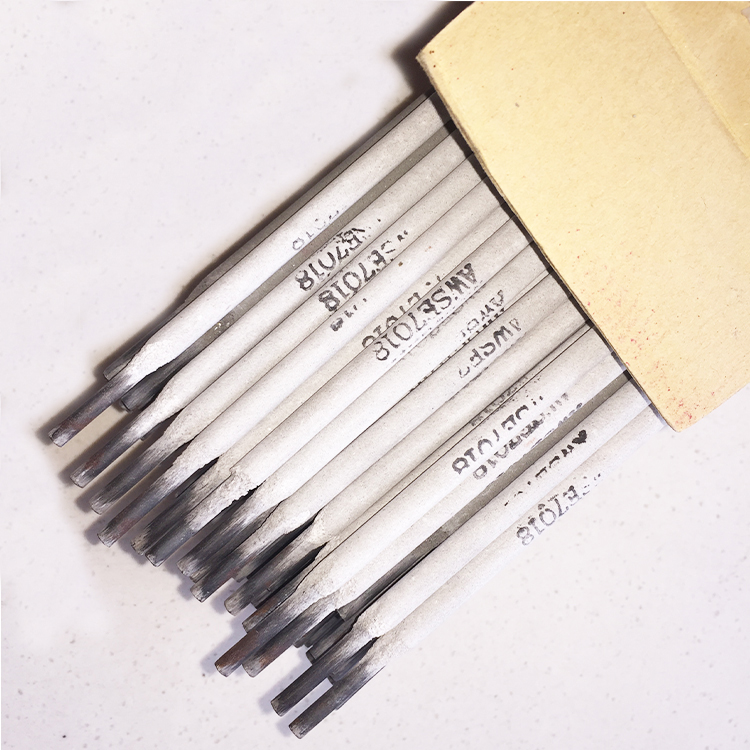Understanding the Features and Applications of 7018 AC Welding Rods for Metalwork
Understanding the 7018 AC Welding Rod A Comprehensive Overview
Welding is a crucial process in various industries, from construction to manufacturing, and using the right welding rod is essential for ensuring strong and durable welds. Among the numerous options available, the 7018 AC welding rod stands out for its versatility, strength, and suitability for numerous applications. In this article, we will delve into the specifics of the 7018 AC welding rod, its characteristics, applications, and best practices for use.
What is the 7018 AC Welding Rod?
The 7018 AC welding rod is a type of stick electrode used in arc welding processes. The designation 7018 represents specific characteristics of the rod the first two digits (70) denote the minimum tensile strength in thousands of pounds per square inch (psi), which is 70,000 psi. The 1 indicates that the welding rod is suitable for all positions, and the 8 signifies the use of low hydrogen electrodes.
The designation AC signifies that this rod can be used with alternating current, making it particularly versatile as it can work with various types of welding machines. This feature allows welders to use the 7018 AC rod in environments where DC welding machines might not be available.
Characteristics of the 7018 AC Welding Rod
One of the primary characteristics of the 7018 AC welding rod is its low hydrogen content. Low hydrogen is crucial because it minimizes the risk of hydrogen-induced cracking, a common problem in high-strength steels. The rod's coating is composed of materials that help prevent moisture absorption, which is vital for maintaining the low hydrogen properties.
Additionally, the 7018 AC rod produces a smooth, stable arc with minimal spatter, resulting in clean welds. This feature makes it suitable for applications requiring aesthetically pleasing welds. The rod is also capable of penetrating thick materials, making it effective for welding in various thicknesses, which adds to its versatility.
Applications of the 7018 AC Welding Rod
The 7018 AC welding rod is widely used in various industries, including construction, manufacturing, and maintenance. It is particularly valuable in structural applications, such as building frames, bridges, and heavy machinery. Its strength and durability make it a preferred choice for welding carbon steels, low alloy steels, and other high-strength materials.
7018 ac welding rod

Moreover, the rod's ability to provide excellent impact resistance makes it suitable for applications exposed to extreme weather conditions or mechanical stress. Oil and gas pipelines, shipbuilding, and pressure vessels are just a few examples where the 7018 AC welding rod can be effectively applied.
Best Practices for Using the 7018 AC Welding Rod
To maximize the benefits of the 7018 AC welding rod, certain best practices should be followed
1. Storage Keep the rods in a dry environment and use a rod oven if available. Moisture can compromise the low hydrogen properties, leading to potential cracking in welds.
2. Preheating For thicker materials, preheating may be necessary to reduce the risk of cracking and improve weld quality.
3. Welding Technique Utilize a stringer bead technique for vertical and overhead positions, allowing for better control over the weld pool and reducing the likelihood of defects.
4. Amperage Settings Ensure that the welding machine is set to the correct amperage based on the rod diameter. This ensures optimal performance and quality of the weld.
5. Post-Weld Treatment Inspect the welds visually and perform non-destructive testing if necessary to ensure integrity and strength.
Conclusion
The 7018 AC welding rod is a reliable and versatile choice for welders across various industries. Its low hydrogen properties, strong tensile strength, and suitability for all positions make it an invaluable tool for producing high-quality welds. By understanding its characteristics and following best practices, welders can ensure not only the integrity of their work but also the safety and longevity of the structures they help build.
-
Best Hardfacing MIG Wire for Sale High Durability Welding SuppliesNewsJun.10,2025
-
ER70S-6 MIG Welding Wire Supplier High Quality China Welding Wire ManufacturerNewsJun.10,2025
-
Premium Aluminum Flux Core Wire China Manufacturer FactoryNewsJun.10,2025
-
Premium Cast Iron Welding Electrodes for Superior BondsNewsJun.10,2025
-
Premium 309L MIG Wire High Strength & Corrosion ResistantNewsJun.10,2025
-
Stainless Steel Welding Rod Types Complete Guide to Corrosion ResistanceNewsJun.09,2025


